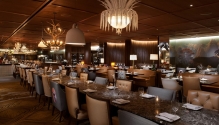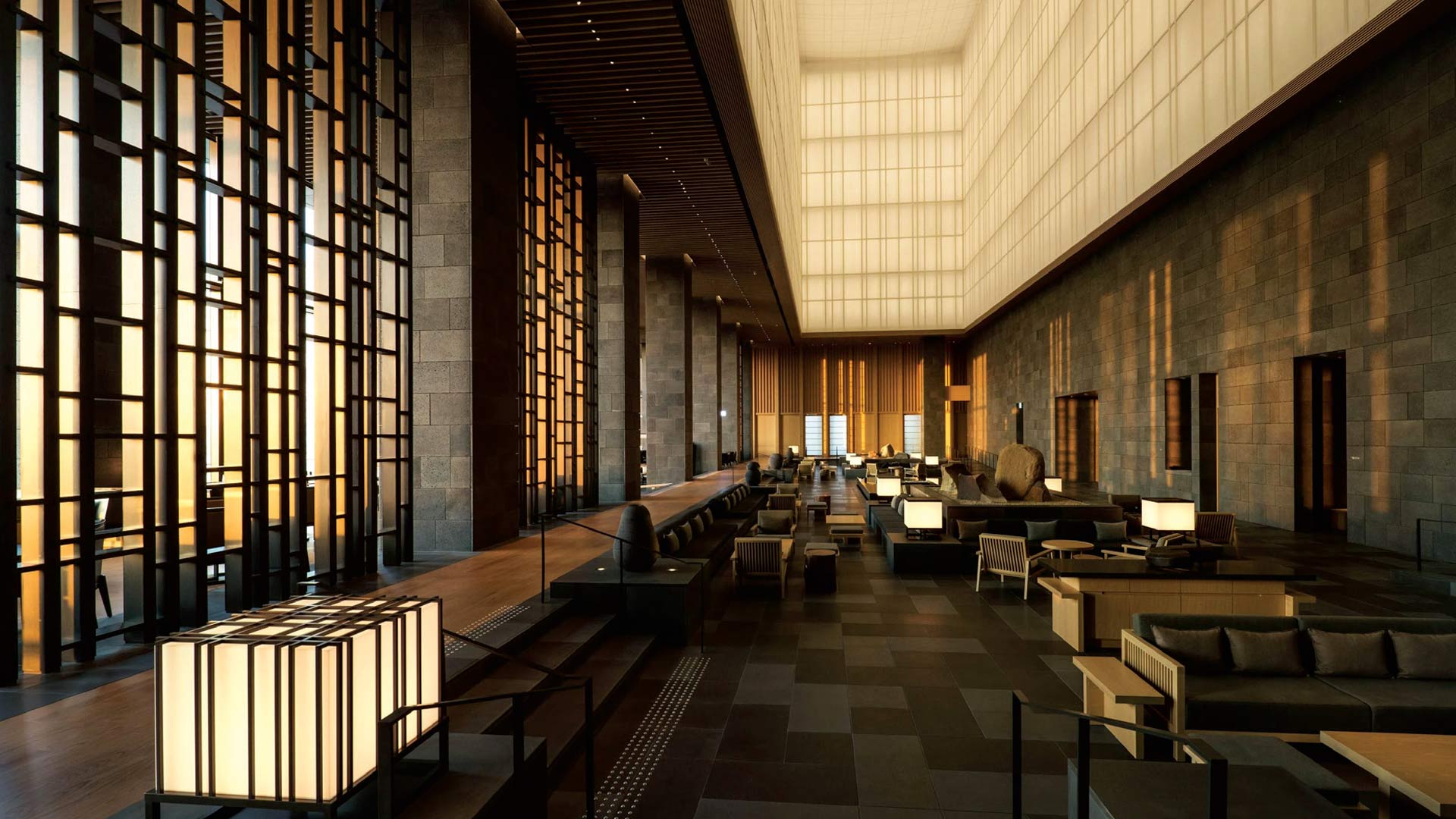From Threshold To Theatre
Atriums that astonish, rituals that endure, and spaces that work harder than ever—hotel lobbies are evolving into theatres of identity and experience.
By Rupali Sebastian
Once upon a time, the hotel lobby was a threshold, a pause between the world outside and the world within. In India, that story began with the Taj Mahal Palace, Mumbai, the country’s first five-star hotel. Its vaulted ceilings, Corinthian pillars, and glittering chandeliers made the lobby an emblem of grandeur and set the stage for how the nation would experience luxury.
By the early 2000s, spectacle entered the picture. Sahara Star, Mumbai, which opened in 2004, enclosed an entire tropical garden under a glazed dome. Bridges, waterfalls, and mature palms created an atrium that was less lobby and more immersive landscape. A year later, The LaLiT Mumbai redefined scale with its seven-storey atrium, Asia’s largest, rising 96 feet high under 18 grand sunroofs. Within this vast volume, the lobby became a cultural stage: 'Tripathga', a 50-foot handcrafted ceramic mural by Manmohan Bhaskar, and 'Ashwamedha Turang', a bronze horse by Satish Gujral symbolising sovereignty and triumph, dominate the space. Live music by Zoheb Khan of the Banaras Gharana underscores the grandeur, turning arrival into a performance as much as a passage. With more than 3,000sq.mtrs. of vertical drama, it was not just an entry point but a civic-scale gathering place.
These milestones proved that the Indian lobby was no longer a corridor but an event. The Taj Mahal Palace, Sahara Star, and The LaLiT Mumbai remain touchstones of design, admired for their grandeur and theatre even today. Yet the conversation has shifted once more. Social media’s appetite for backdrops, technology’s erosion of the front desk, globalisation’s search for authenticity, and the economics of revenue generation are reshaping lobbies into stages, salons, and social condensers. From heritage to hybridity, the hotel lobby has become the heartbeat of hospitality.
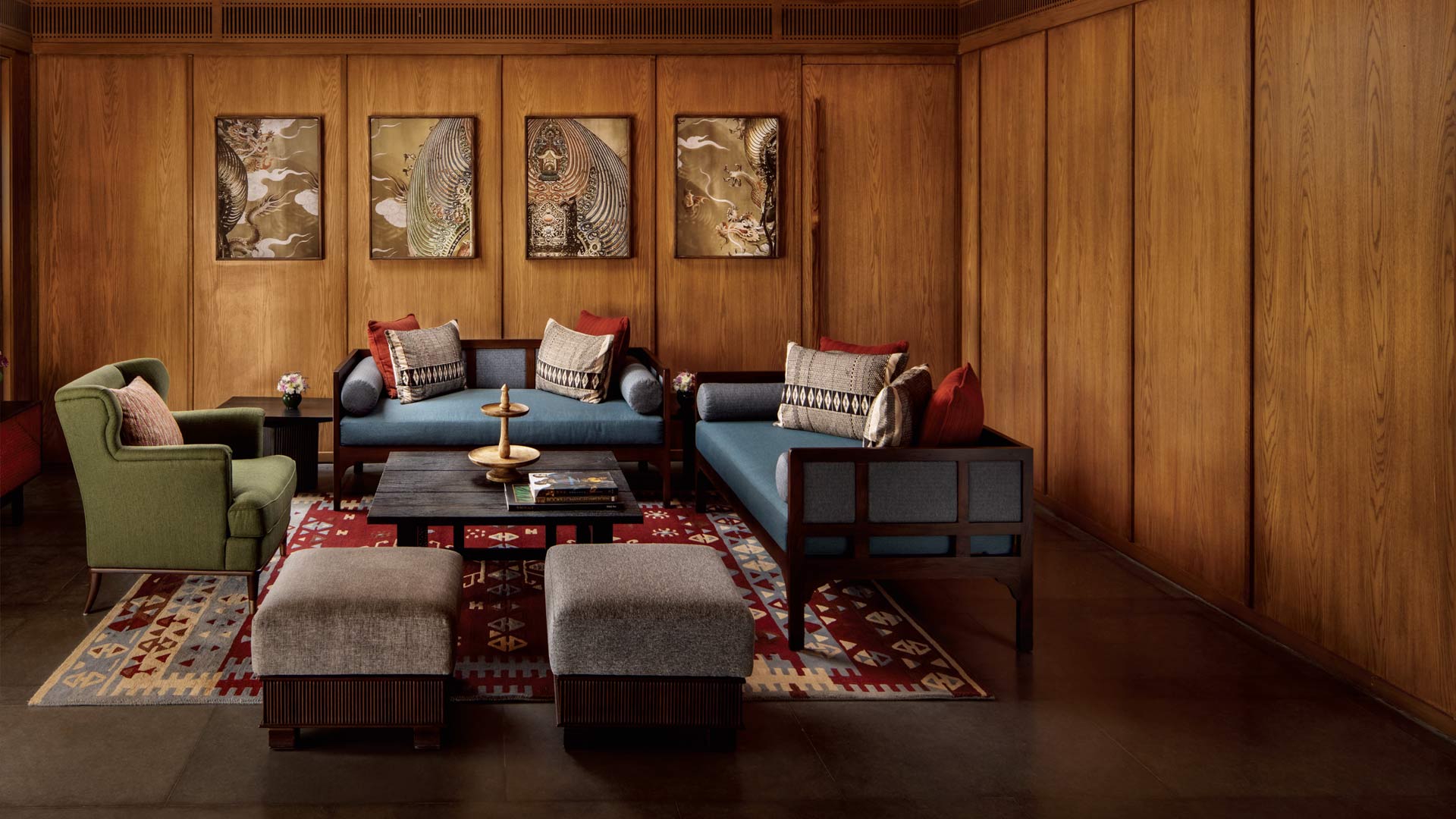
At Taj Guras Kutir, Sikkim, Studio Lotus shapes the lobby with warm timber panelling, Himalayan crafts, and a bold scarlet chandelier.
The social stage: personality and performance
If the lobbies of the early 2000s impressed with spectacle, today they are asked to perform with personality. As Christian Lundwall, founder of Studio Kin—which he co-helms with creative head of design and partner Emma Nora Hedberg, and whose hospitality portfolio spans the US, India, Dubai and Europe—puts it, "A lobby isn’t just a place to sit and wait anymore, it’s a backdrop for selfies and stories. It’s like they’ve gone from being a coat rack to being a main character."
That sense of performance explains why younger brands have redefined the lobby as their stage. At Moxy hotels worldwide—including the new Moxy Bengaluru Airport Prestige Tech Cloud—and across the ibis brand with properties such as ibis Mumbai BKC, the design DNA centres on communal lobbies where the bar doubles as check-in, laptops perch on long tables, and social energy is the real amenity.
Lundwall believes this reinvention has filled the void left by the shrinking front desk. "Without the reception counter, you must create other reasons for people to pause—bring the bar or café into the lobby, layer in music, art, flexible seating. Replace that lost ritual with new rituals: a coffee, a conversation, a moment of discovery."
Globally, The Hoxton, CitizenM, 25hours, and Ace Hotels showed how the lobby could become a brand’s living room. At The Hoxton, Sharan Pasricha—founder of Ennismore, now Accor’s joint venture in lifestyle and leisure hospitality—rewrote the rulebook. While others chased numbers, Pasricha chased connection, reimagining the Hoxton lobby as a cultural commons where guests and locals naturally converged. India’s newer properties are now picking up that rhythm, appealing to a generation that values connection as much as convenience.
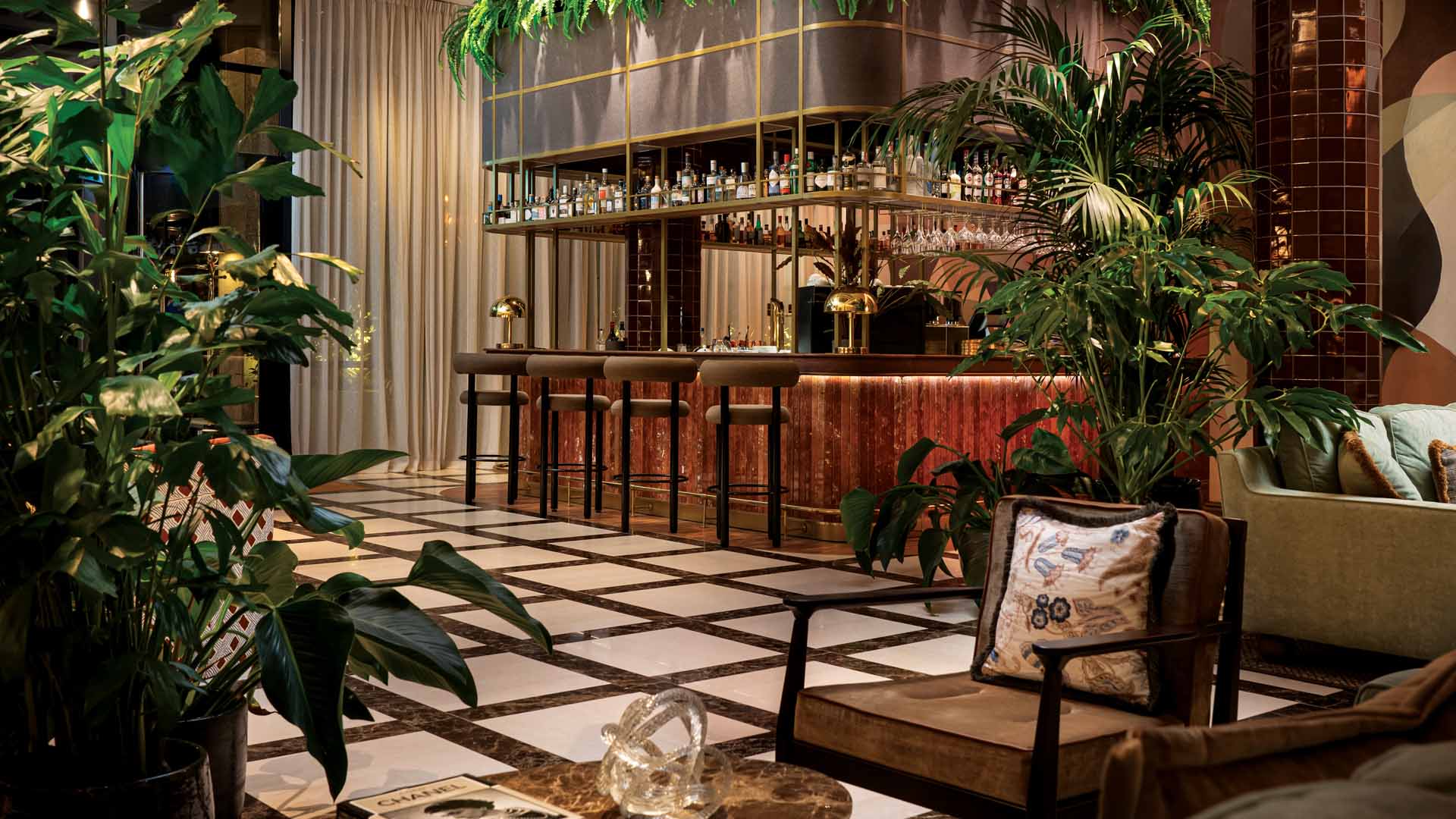
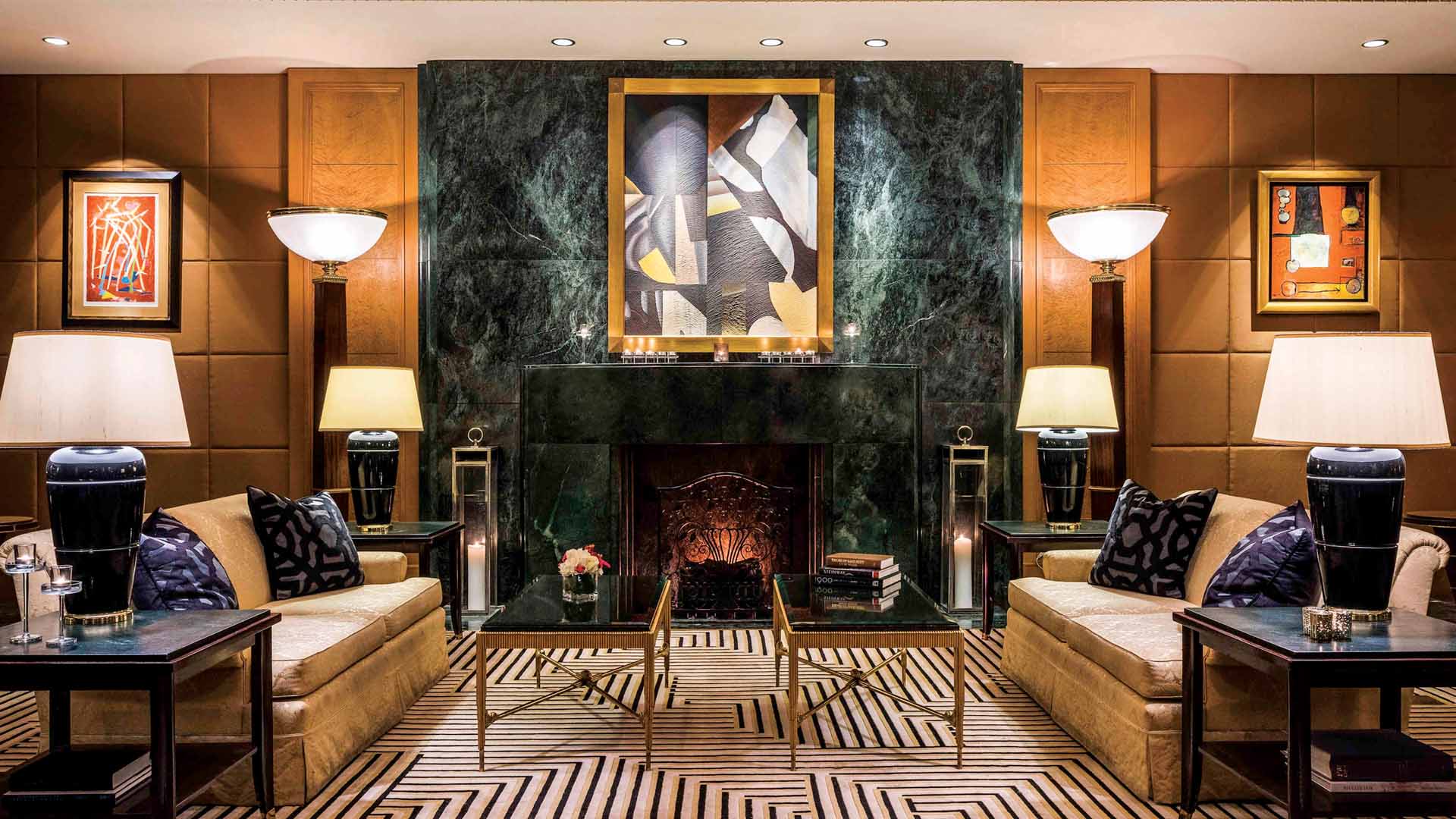
Yann Leroy’s architecture frames a lobby that unfolds like a Parisian living room at Sofitel New York.
Designing for flow and pause
From social stage to circulation hub, today’s lobbies must do more than dazzle: they must choreograph movement and stillness in the same breath. "A good lobby must move people through it carefully and tempt them to stay," says Lundwall. "If you treat light, acoustics, and furniture as signals—bright and open for flow, warm and tactile for linger—the space naturally choreographs different tempos."
Ankur Choksi, co-founder of Delhi-based Studio Lotus, known for hospitality projects such as RAAS Chhatrasagar, RAAS Devigarh, and Taj Theog Resort & Spa, Shimla, agrees. For him, the lobby’s dual role is best achieved through layered spatial experiences, intuitive navigation, and clusters of seating. "When done well, circulation is intuitive, yet there are always pauses along the way. The idea is to let people find their own rhythm—whether it is a guest rushing to the lift, a business traveller catching a quick coffee, or locals dropping in for an event."
He sees this evolution as tied to inclusivity. "Increasingly, the lobby is doubling as a cultural condenser—welcoming locals as well as guests. In urban contexts, it becomes porous and active, blurring the lines between the hotel and the city.
In resorts, it takes on the role of the social watering hole, where stories are exchanged as naturally as drinks or meals." Choksi points to RAAS Chhatrasagar, Rajasthan, where the lobby merges with the all-day dining pavilion overlooking the lake, and Aloft New Delhi Aerocity, where a central courtyard shapes the experience. In both cases, the lobby is the communal stage, framing atmosphere, identity, and interaction. “I strongly believe (the lobby) is, and will continue to remain, the hotel’s most powerful communal space.”
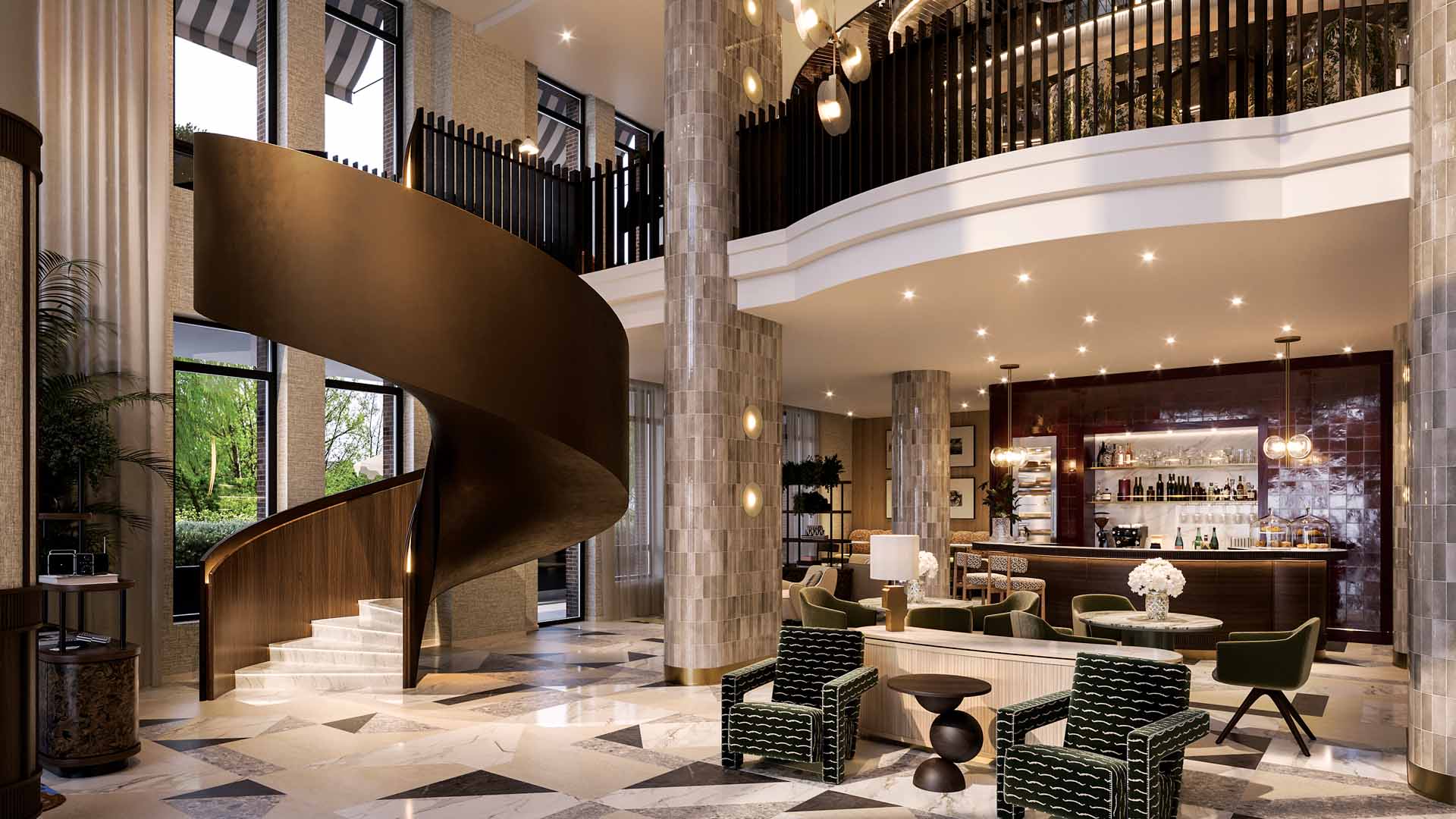
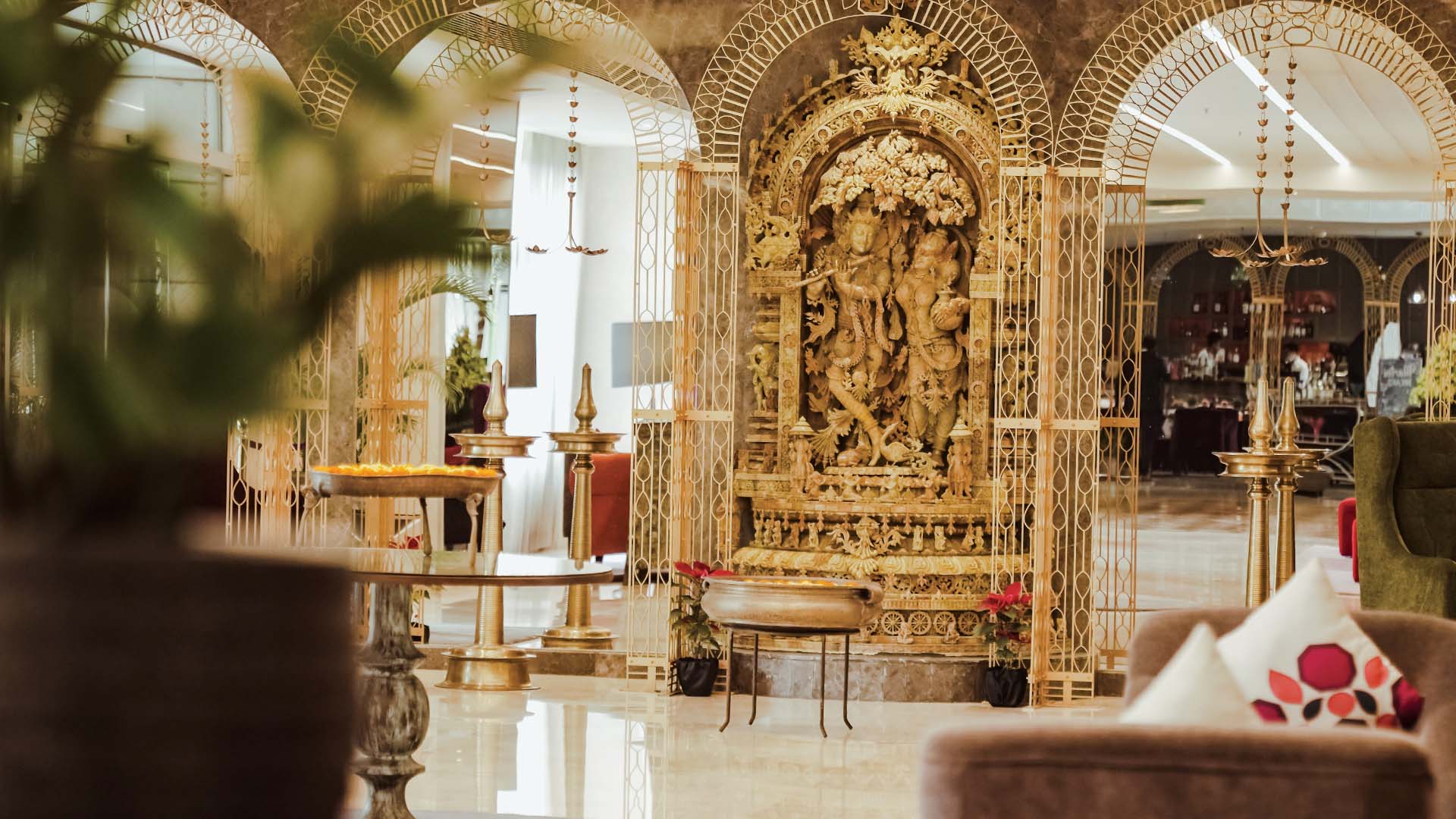
Grand Mercure Bengaluru at Gopalan Mall's lobby layers fragrance, sculpture, and art to celebrate Karnataka’s cultural heritage.
Cultural condensers
If globalisation has flattened tastes, authenticity has become the new luxury. "Our aim is not to mimic the vernacular but to interpret it," says Choksi. "Regional subcultures, local materials, and craft traditions bring authenticity without slipping into clichés."
Lundwall makes a similar point. "It’s less about hanging a postcard of the skyline on the wall, and more about capturing the rhythm and flavour of the city in subtle ways."
Indian examples illustrate this well. At Gateway Bekal, Kerala, the lobby is alive with storytelling. Carved elephant statues frame the arrival, while sari weaving is demonstrated live in the space, and evenings bring Mohiniattam performances accompanied by high tea. The lobby is not just décor but a cultural proscenium where local craft and tradition unfold daily.
At Grand Mercure Bengaluru at Gopalan Mall, the experience is equally layered. Guests are welcomed with the fragrance of Mysore sandalwood, while a Hoysala wood-carved sculpture anchors the atrium. Art walls curated with contemporary works by Karnataka artists are rotated regularly, making the lobby feel like an evolving gallery. Both prove that when lobbies engage directly with living traditions—whether through craft demonstrations, fragrance, or performance—they transcend design to become cultural condensers in the truest sense.
The lobby as a profit centre
From cultural identity to commercial viability, the lobby is increasingly judged by its ability to earn its keep. For Bobby Mukherji, founder of Bobby Mukherrji Architects and designer of several well-received hospitality projects such as the aforementioned Sahara Star, the space must work as hard as the guestrooms. "The entrance lobby has become a huge multipurpose space," he says. "Guests pass through it constantly, so the experience has to be special, and at the same time it has to generate revenue for the hotel beyond the guestrooms."
At Hilton Gurugram Baani City Centre, this thinking translated into a double-height lobby with skylights and seamless F&B. Mukherji describes the dynamic: "You see people on laptops, in meetings, ordering drinks and small bites. That makes the lobby a profit-generating space."
He points to the Lobby Atrium Bar at Taj Lands End, Mumbai as another benchmark. "From morning till midnight it’s always busy—business meetings, film scripts being discussed, tourists dropping in. That kind of buzz conveys the hotel is alive. It leaves a psychological impact on the guest."
For him, atmosphere drives revenue as much as design. “Lighting, acoustics, air quality, fragrance, comfortable furniture, good service—these make people feel good. When you step in from Gurgaon’s pollution into filtered air and soft music (of Hilton Gurugram), you feel the difference immediately.”
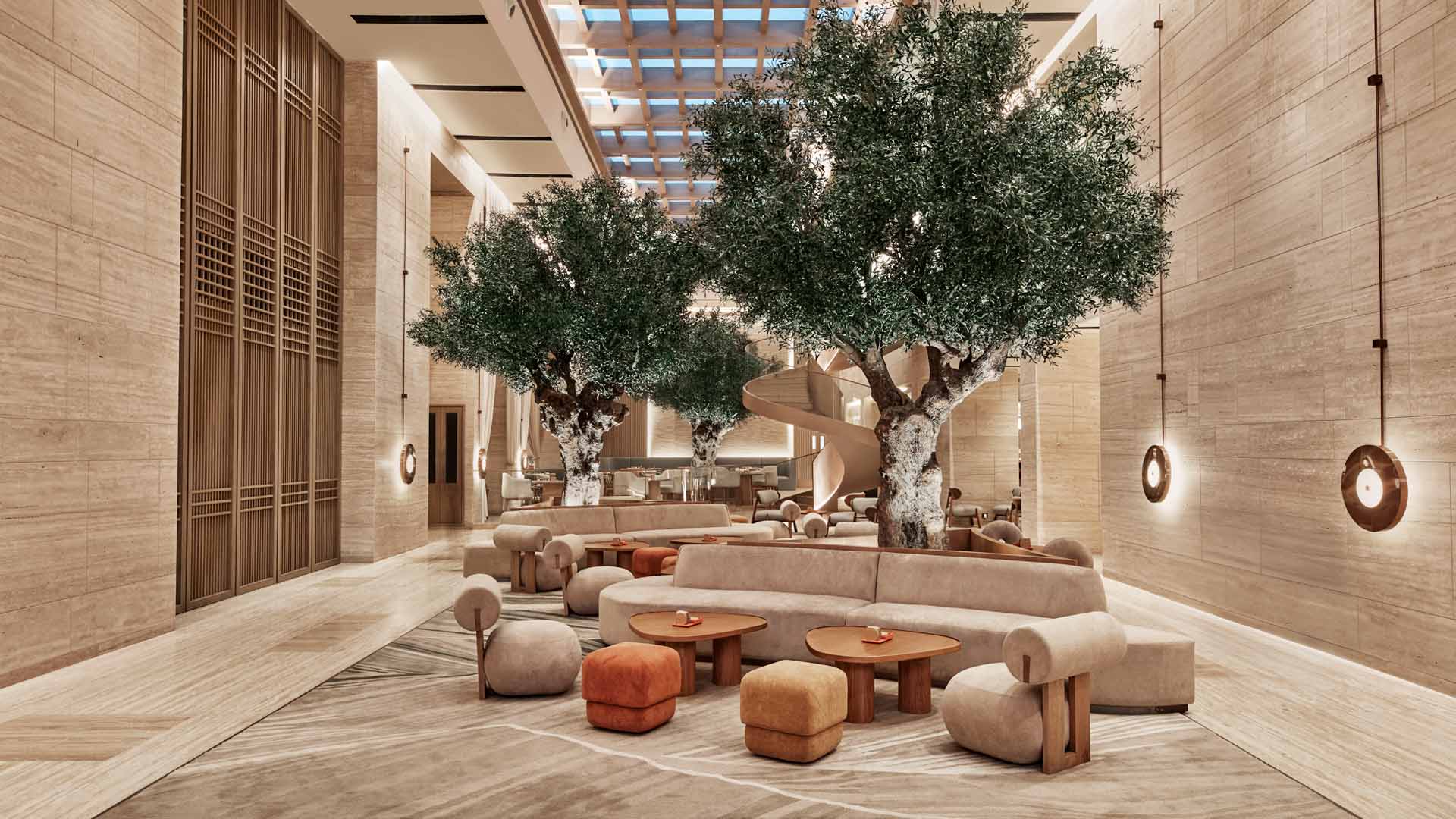

The Standard, New York: A lobby-as-nightlife-hub, where art, music, and culture flow as freely as cocktail.
Rituals as anchors
From commerce to culture, lobbies also rely on rhythm. With the front desk shrinking, hotels have turned to ritual to anchor arrivals. At The St. Regis Hotels & Resorts worldwide, for instance, Afternoon Tea is reimagined for the modern guest, while the daily sabrage on the Grand Staircase at six o’clock is a performance of candlelight, sword, and champagne that turns arrival into theatre.
St. Regis is not alone in this. Around the world, hotels use ritual to transform lobbies into stages of anticipation. At Raffles Singapore, the long-standing Singapore Sling ritual is woven into its iconic Long Bar and lobby arrivals. At Aman Tokyo, evenings are marked by lantern-like light changes in the vast lobby, creating a moment of calm transition for guests returning from the city.
These are not services so much as experiences of belonging, repeated at the same time every day, grounding the hotel in rhythm. As luxury evolves, ritual offers a counterpoint to technology’s invisibility: a reminder that while check-ins may vanish into mobile apps, the memory of a shared toast or a daily performance lingers long after checkout.
The living room lobby
If rituals anchor the lobby in memory, atmosphere anchors it in daily life. For Yann Leroy, Chief Design Director at AXS Design with a portfolio spanning Sofitel, Pullman, and Novotel projects worldwide and a presence in Paris, Mumbai and Bangkok, the profound shift lies not in technology but in experience. "The lobby as a living space, with at the same time coffee shop, reception, bar—that is a much more profound change than any technology," he says. "In new business hotels you see the same space evolve through the day: breakfast in the morning, co-working by afternoon, bar by evening. It is the living room of a younger generation, flexible yet familiar."
Luxury lobbies, however, resist such fluidity. "In the luxury context, people are not only buying a service, they are buying cultural depth. There is aspiration in a five-star environment, and that cannot be changed too quickly. You go to Disneyland for Mickey Mouse. You go to the Taj for the Taj experience."
While heritage itself can be the most powerful welcome, Leroy also finds the lobby of Sofitel New York (whose architecture he has designed) as ideal: "You enter through the leg of a T, and don’t immediately see the front desk. Instead you arrive in what feels like a Parisian living room with eclectic furniture. To find the desk you must go further in."
The hotel lobby has travelled far from its origins as a waiting room. Today it is plaza, gallery, living room, theatre, and marketplace. It is the stage on which hotels declare their identity, whether through spectacle, ritual, or community.
What unites these varied forms is a shared ambition: to create spaces where people want to pause, not just pass through. The desk may shrink, the technology may vanish, but the lobby remains the hotel’s most powerful communal space—alive, evolving, and always ready to surprise.
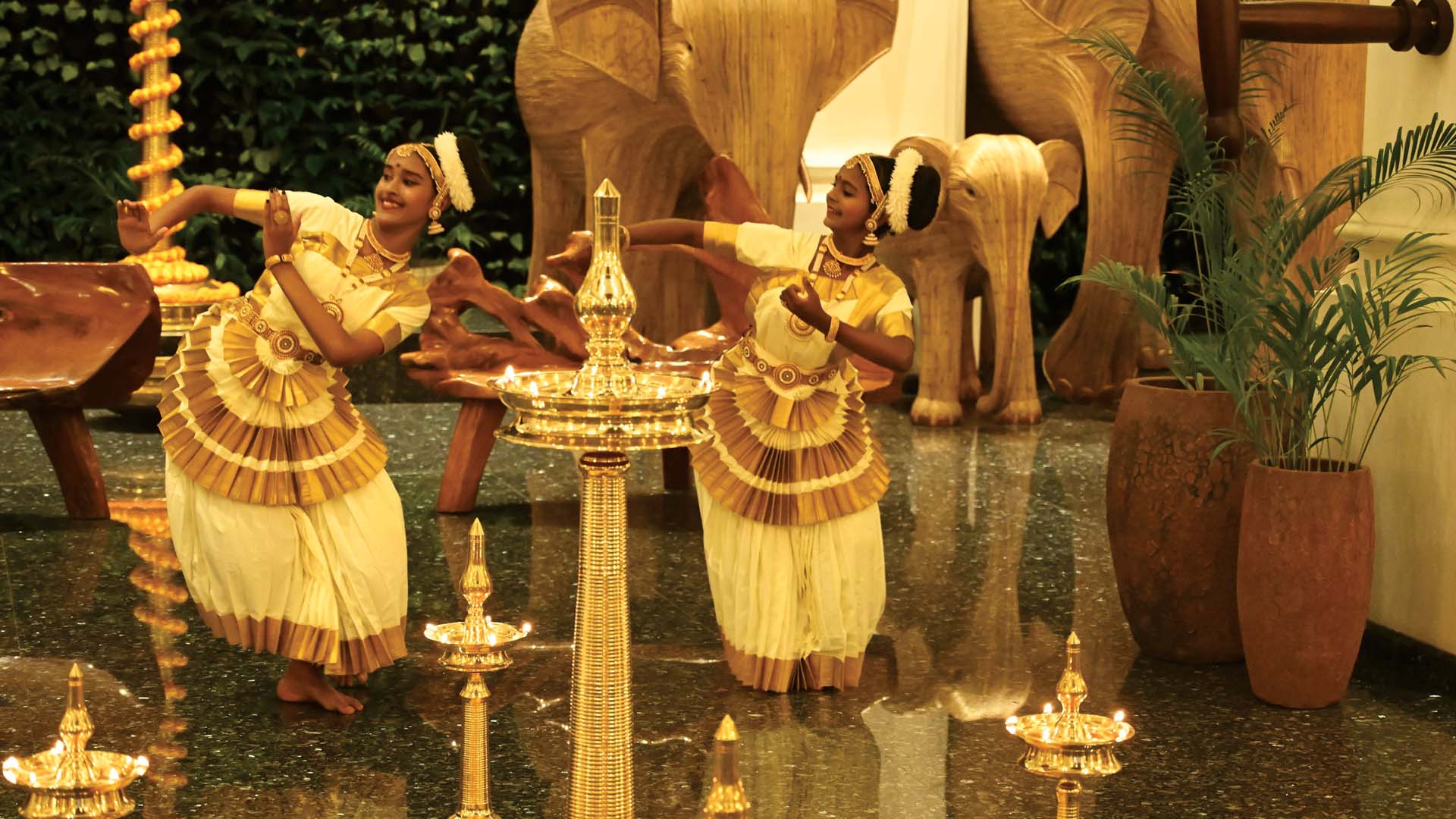
Gateway Bekal, Kerala and Grand Mercure Bengaluru at Gopalan Mall transform arrival into an immersion in local craft and tradition.
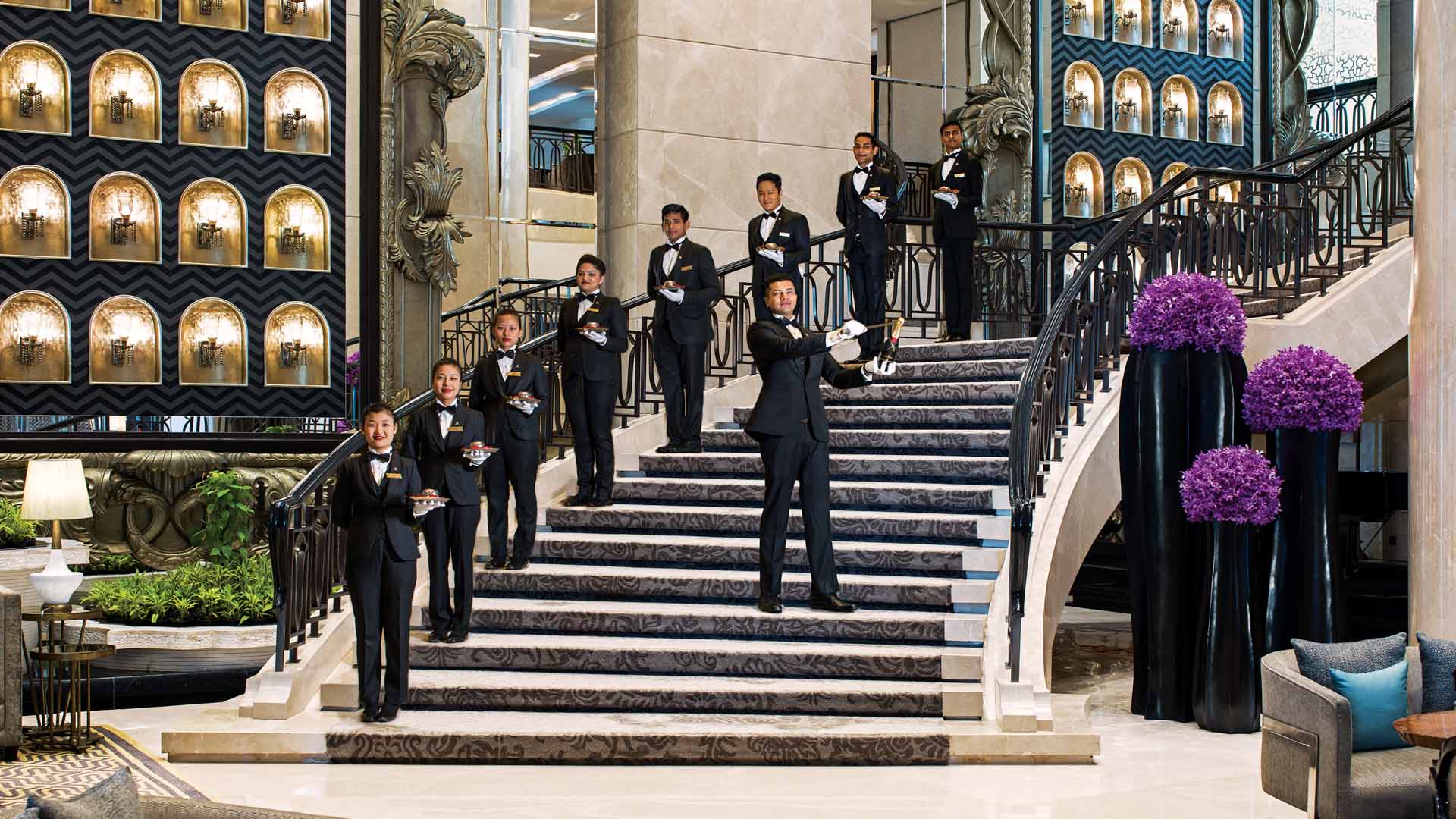
Over a century of welcome
As India’s first five-star hotel, opened in 1903, the Taj Mahal Palace, Mumbai set the template for grandeur and welcome. Its lobby is more than an entrance—it is where Indian luxury hospitality first found architectural expression, and why it deserves a spotlight in this story of evolution.
Step through the teak doors and the Florentine-style hall unfolds with polished Italian marble floors, Corinthian pillars, and Murano chandeliers. The reception counters, once tucked along the side walls, became fashionable rendezvous points in the 1930s and 40s, when the Metro and New Empire theatres drew cinephiles nearby. Over the decades, these desks have witnessed arrivals that defined an era—from maharajas and heads of state to George Harrison and John Lennon.
The lobby also carries layers of memory. A remarkable canvas created in 2006 by Ratan N. Tata with artist Laxman Shreshtha speaks to the family’s bond with the hotel. Nearby, works by modern masters such as V.S. Gaitonde affirm the Palace’s role as a living gallery. The journey naturally flows to the cantilevered Grand Staircase beneath the 240-foot dome, where Mahatma Gandhi, Queen Elizabeth, and Lord Mountbatten once descended, and where a white horse famously climbed during the Animal Ball of the 1950s.
Even today, guests pause to admire masterpieces by Indian greats, proving that the Taj’s welcome is as much cultural as architectural—timeless, elegant, and deeply personal.

Studio Lotus anchors the RAAS Chhatrasagar lobby as a lakeside pavilion—welcoming guests with water, sky, and community.

















